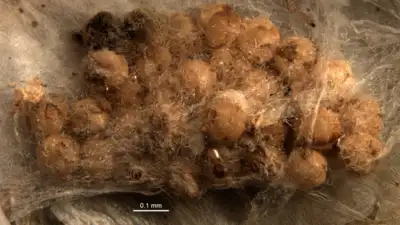- News
- City News
- kolkata News
- ZSI pioneers global breakthrough in decoding hidden spider-parasitoid networks with DNA metabarcoding
Trending
ZSI pioneers global breakthrough in decoding hidden spider-parasitoid networks with DNA metabarcoding
Indian scientists at ZSI have pioneered a groundbreaking method using DNA metabarcoding to decode spider-parasitoid relationships directly from egg sacs. This innovative approach, published in Scientific Reports, identified elusive parasitoid genera and unveiled hidden ecological connections. The research significantly contributes to biodiversity conservation and ecological understanding by making previously invisible interactions visible.
In a landmark scientific advancement, researchers from the Zoological Survey of India (ZSI) have catapulted Indian biodiversity research onto the global stage by becoming the first in the world to decode complex spider–parasitoid associations directly from spider egg sacs using DNA metabarcoding.Led by K. Rajmohana and including Rupam Debnath, V. Sushama, and K. P. Dinesh, the ZSI team’s findings were published in the prestigious journal Scientific Reports. The study harnesses cutting-edge high-throughput sequencing technology to explore the microscopic world of parasitoids—tiny insects often less than a millimetre in size—embedded deep within spider biology.“Sustainability begins with understanding the intricate web of life,” said Dhriti Banerjee, Director of ZSI, congratulating the team.
Operation Sindoor
Poll
Do you believe that DNA metabarcoding will revolutionize biodiversity research?
End of Article
Follow Us On Social Media









